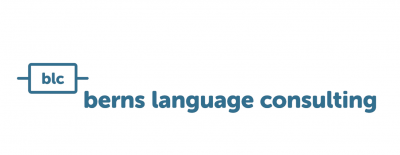Well then, what do you say?
And the new year has finally arrived – the long-awaited new year 2025, in which everything is done better. A new year with 12 chapters and 365 blank pages, ready to become the most beautiful and colorful book of our lives. And this year is a special one for blc – we’re celebrating 20 years!
But how do you actually welcome in a new year? Is there a “right” at all? And how long can you “throw around” New Year’s wishes?
To find out, we take a brief excursion into the wonderful world of New Year’s terminology and have compiled the most important “rules” for you. With this in mind…
... let's go New Year's terminology
Happy New Year! Happy New Year! Happy New Year!
These are just some of the New Year’s wishes that are known in the German-speaking world. Depending on the region, you want something different. If you had to create a definition for this terminology entry, it would probably be something along these lines: “New Year’s greetings that are verbally exchanged in the days and hours around the turn of the year. They should be positive and contain good wishes for the New Year.”
What other names are there for the New Year’s wishes? Are there preferred New Year’s greetings?
As you can clearly see in the chart, the New Year is greeted in a colorful mix in Germany, Austria and Switzerland. In the north and north-west of Germany, for example, most people say “Happy New Year!”. In the south, on the other hand, people greet the year with a “Happy New Year!” or in a longer form “Happy New Year!”. In eastern regions, people would like to see something similar, but in a different order. In Rhineland-Palatinate and parts of Hesse, it’s “Happy New Year!” again. This, in turn, sounds almost like our Austrian neighbors, where you hear “Happy New Year!” on Silver Star night.
Why Cheers or Prosit?
And how long can I go?
This question is also not so easy to answer. Etiquetteers recommend “distributing” New Year’s greetings in the first week of January. Generally speaking, you can still wish each other a “Happy New Year!” until mid-January, especially if you haven’t seen each other at work because of the winter vacations. From the end of January, however, you should refrain from sending New Year’s greetings.
However, depending on the situation, the relationship with the other person and the message, we think there is still time 
And what do we wish you?
Well, that’s quite clear! We hope that this year is full of surprises, offers you new opportunities and that you meet many friendly faces. That the not-so-friendly faces don’t cross your path so often or that the year brings you innovations in other ways. We hope that you can always see the good things in life, but also accept the difficult moments or times (we have an open ear for you). Here’s to this year being a complete success both privately and professionally, but that we all learn to deal with low periods. And what should never be missing – health, peace, love and happiness
Let’s fill this new book with many moments, stories, experiences, lots of laughter and terminology ;).
Conclusion
To come back to the question from the beginning: New Year’s terminology is colorful, has many preferred terms – depending on where you are – and knows almost no boundaries, neither in terms of New Year’s greeting wording nor time. However, there is one important rule, or rather (one) rejected term, namely negatively worded greetings. In this case, simply none at all.
The question about New Year’s terminology is now answered, but is your terminology shoe pinching somewhere else? Do you need support with your terminology management?
Don’t hesitate to get in touch with us for an initial consultation to discover how we can support you. The coming year might be the perfect time to completely redesign your terminology processes with the help of AI. Let us help you find the most efficient solution!








